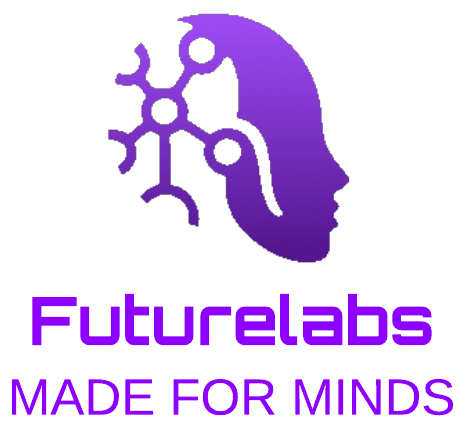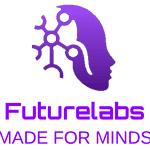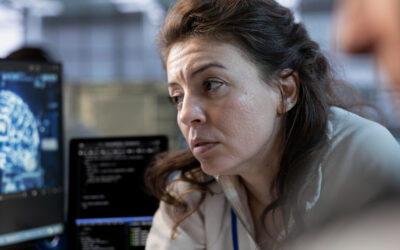Geoffrey Hinton: The Godfather of Deep Learning
Introducing Prof. Hinton:
Geoffrey Hinton, born on December 6, 1947, is a key figure in the field of artificial intelligence. His pioneering work in neural networks has revolutionized the way machines learn and process information, laying the foundation for many of the technological advances we enjoy today.
Hinton has dedicated much of his academic life to exploring the possibilities of artificial intelligence. His interest in how the human brain works and his desire to create machines capable of learning in a similar way led him to delve into the field of neural networks, a branch of artificial intelligence inspired by the structure and function of the biological brain.
Throughout his career, Hinton has made groundbreaking contributions to the development of deep learning, a subfield of artificial intelligence that has become the driving force behind many of the most recent advancements in areas such as image recognition, natural language processing, and autonomous driving.
In 2023, Hinton made a decision that surprised the scientific community: he left his position at Google, where he had worked for several years. In his resignation letter, he expressed his growing concerns about the development of artificial intelligence and the potential risks this technology could pose to humanity.
In October 2024, Professor Hinton was awarded the Nobel Prize in Physics.
In this article, we will explore the life and work of Geoffrey Hinton, from his early work in neural networks to his ideas on the future of artificial intelligence. We will analyze his major contributions, his impact on the industry and society, as well as his concerns about the development of this powerful technology.
Education, Early Work, and the Birth of Connectionism:
Geoffrey Hinton, a pioneer in the field of artificial intelligence, has dedicated much of his career to exploring the possibilities of neural networks. His academic roots are in experimental psychology, where he developed a deep interest in the workings of the human brain. This fascination led him to seek computational models that could simulate cognitive processes, thus laying the foundation for his future research in artificial intelligence.
Geoffrey Hinton’s early work in neural networks laid the groundwork for the development of deep learning. His interest in connectionism and his development of the error backpropagation algorithm were crucial in overcoming initial challenges and making neural networks a powerful tool for artificial intelligence. Despite obstacles, Hinton persevered in his research, paving the way for the advances we witness today.
This text offers a fairly comprehensive view of Geoffrey Hinton’s contributions to the field of artificial intelligence and deep learning. Below is a summary of the key points covered:
Acquisition of DNNresearch by Google: In 2013, Google acquired Hinton’s company, which allowed large-scale research to be conducted and accelerated the development of commercial technologies.
Connectionism and Neural Networks: Influenced by connectionism, Hinton began to develop computational models based on neural connections. This led to artificial neural networks, which have become powerful tools for modeling complex cognitive processes.
Initial Challenges and the Backpropagation Algorithm: Despite the potential advances, the early neural network models faced significant obstacles, such as the lack of effective algorithms for training them. Hinton’s collaboration with David Rumelhart produced the backpropagation algorithm, which enabled efficient learning of neural networks from large amounts of data, although limited computational power constrained its application.
Key Collaborations: Hinton worked with several AI pioneers, which was fundamental to the development of his ideas and the advancement of the field in general.
Key Contributions of Hinton:
- Convolutional Neural Networks (CNNs): His work with CNNs revolutionized computer vision, especially in tasks such as image recognition and object detection.
- Autoencoders and Restricted Boltzmann Machines: Hinton was a pioneer in these generative models, which are useful for dimensionality reduction and pattern discovery in large volumes of data.
- Capsule Networks: In response to the limitations of traditional CNNs, Hinton proposed capsule networks, an architecture that could improve the modeling of spatial relationships within data.
Impact on Industry and Society:
- Computer Vision: CNNs have revolutionized applications such as autonomous vehicles and computer-assisted medical diagnostics.
- Natural Language Processing: Hinton has influenced the development of increasingly sophisticated machine translation systems and virtual assistants.
- Speech Recognition: Advances in deep learning have also significantly improved the accuracy of speech recognition systems like Siri and Alexa.
Social Implications and Future Challenges:
The rapid advancement of artificial intelligence presents a range of challenges and opportunities. Some of the key challenges include:
- Job Automation: The automation of tasks traditionally performed by humans raises concerns about the future of employment.
- Data Privacy: Training deep learning models requires large amounts of data, raising concerns about the privacy and security of personal data.
- Algorithmic Bias: Deep learning models may perpetuate biases present in training data, which can have negative consequences in decision-making.
It is essential to address these challenges proactively to ensure that AI develops in an ethical and responsible manner.
The Legacy of Geoffrey Hinton and His Role as a Mentor:
Geoffrey Hinton has not only been a pioneering researcher in the field of deep learning but has also played a key role as a mentor and leader in the scientific community. His influence extends beyond his own contributions and has inspired generations of researchers to explore the frontiers of artificial intelligence.
Below, we explore some key aspects of his legacy as a mentor:
Creation of a Research Ecosystem: Hinton has been instrumental in creating a vibrant and collaborative research ecosystem around deep learning. He established cutting-edge research labs, such as the Vector Institute in Toronto, which have attracted some of the world’s best talent.
Encouragement of Collaboration: He has fostered collaboration among researchers from different disciplines, such as psychology, neuroscience, and computer science. This interdisciplinary approach has enriched the field of deep learning and allowed for addressing complex problems from multiple perspectives.
Mentorship of Young Researchers: He has been an inspiring mentor to numerous PhD students and young researchers. He has shared his knowledge and experience with them, fostering their professional development and supporting their innovative ideas.
Promotion of Openness and Transparency: He has been a strong advocate for openness and transparency in scientific research. He has shared his codes, data, and results with the community, accelerating progress in the field of deep learning.
Impact on the Scientific Community:
Hinton’s impact on the scientific community has been profound and lasting. Thanks to his work and leadership, deep learning has become one of the most active and promising research areas today. Some of the most important impacts include:
Popularization of Deep Learning: Hinton has played a fundamental role in popularizing deep learning, making it accessible to a wider audience and attracting new talent to the field.
Creation of New Opportunities: The rise of deep learning has created new job and research opportunities across a wide range of industries.
Acceleration of Scientific Progress: Hinton’s work and that of his students has accelerated progress in many fields, from medicine to robotics.
In summary, Geoffrey Hinton is not only a brilliant scientist but also a visionary leader who has left an indelible mark on the field of artificial intelligence. His legacy as a mentor and his commitment to the scientific community will continue to inspire future generations of researchers.
A Key Collaboration with Hinton, Yann LeCun, a Pioneer of Convolutional Neural Networks
Yann LeCun, along with Geoffrey Hinton and Yoshua Bengio, is considered one of the “godfathers” of deep learning. His work has been fundamental to advancements in computer vision and pattern recognition. LeCun has held academic positions at prestigious institutions such as the University of Toronto, AT&T Bell Labs, and New York University. LeCun has been an influential leader in the scientific community, organizing conferences, publishing numerous papers, and supervising many PhD students. Currently, LeCun holds a leadership position at Facebook, where he oversees AI research efforts.
LeCun developed an early interest in artificial intelligence and robotics during his childhood. This interest led him to study electrical engineering and later earn a PhD in computer science.
In the early 1980s, LeCun began researching convolutional neural networks, a type of neural architecture especially suited for processing visual data. He developed the backpropagation algorithm to train these networks, laying the foundation for many subsequent advances in the field. The CNNs developed by LeCun have revolutionized the field of computer vision, enabling applications such as facial recognition, object detection, and image segmentation.
One of the first practical applications of the CNNs developed by LeCun was optical character recognition. His work in this area was crucial for improving the accuracy and efficiency of OCR systems.
A Crucial Step in the Development of AI: The Collaboration Between Hinton, LeCun, and Yoshua Bengio
While the three researchers worked independently in many aspects of their careers, their paths crossed several times, and their joint collaboration had a profound impact on the field of artificial intelligence.
The three researchers shared a common interest in artificial neural networks and deep learning. Their research intermingled, and they often cited each other’s work. They met at numerous conferences and workshops, where they exchanged ideas and established collaborations. While they did not always work on formal joint projects, their research influenced each other, and they frequently used the tools and techniques developed by the others.
Impact of the Collaboration on the Field:
Popularization of Deep Learning: The collaboration between LeCun, Hinton, and Bengio contributed to the popularization of deep learning and demonstrated its potential to solve complex problems across a wide range of fields.
Establishment of a Community: They helped establish a community of deep learning researchers, fostering collaboration and the exchange of ideas.
Advances in Research: Their joint and separate research efforts drove significant advances in the field, such as the development of more efficient training algorithms and the application of deep learning to new problems.
In summary, the collaboration between LeCun, Hinton, and Bengio was key to the revival of deep learning and its impact on the world today. Their joint and separate research laid the foundation for many of the advances we see today in fields like computer vision, natural language processing, and robotics.
Delving into Geoffrey Hinton’s Work:
Apart from his collaboration with Yann LeCun and Yoshua Bengio, Hinton has made numerous individual contributions to the field of deep learning. Some of his most notable ideas include:
Boltzmann Machines: Hinton was a co-inventor of Boltzmann machines, a type of neural network that can learn internal representations of data. Boltzmann machines are a fascinating topic within the field of neural networks and deep learning. Geoffrey Hinton, along with Terry Sejnowski, pioneered the development of these neural networks inspired by statistical physics. Boltzmann machines are stochastic neural networks that learn to represent the probability distribution of a data set. Like traditional neural networks, they are composed of nodes (neurons) interconnected by synaptic weights. However, unlike other networks, Boltzmann machines are bidirectional and symmetric, meaning information can flow in both directions between the neurons.
Key features of Boltzmann machines can be outlined as follows:
- Stochasticity: The nodes in a Boltzmann machine have a probability of activation, introducing an element of randomness into the model.
- Bidirectionality: The connections between the nodes are symmetric, allowing information to flow in both directions.
- Learning by Maximum Likelihood: Boltzmann machines are trained to maximize the probability of generating the training data.
Boltzmann machines have been an inspiration for many other deep learning techniques, such as deep neural networks and generative adversarial networks. While they have been surpassed in popularity by other models, they remain a valuable tool for research and the development of new machine learning techniques.
Backpropagation: Although he was not the only one to develop the backpropagation algorithm, Hinton was one of the first to apply it to deep neural networks and demonstrate its effectiveness.
Distributed Representations: Hinton has been a strong advocate for distributed representations, where information is encoded in activation patterns across many neural units.
Deep Reinforcement Learning: Hinton has explored the use of deep reinforcement learning to train intelligent agents capable of making decisions in complex environments.






0 Comments